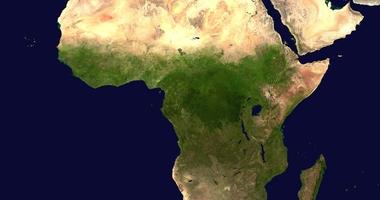
COP 27: Decision Time in Egypt
Seen from one angle, the upcoming two weeks of talks at the UN's COP 27 climate conference boils down to one essential question: Does the world move forward with something like a just transition to clean energy?
The unofficial theme of this year's conference could very well be "Climate Action in a Time of Polycrisis" (the term from Adam Tooze and others for multiple interrelated crises converging simultaneously).
After all, negotiators arrive in Egypt at a time when the global energy crisis unleashed by Russian aggression in Ukraine means the question top of mind for many Northern Hemisphere leaders isn't how they'll meet their emissions goals for 2030, but simply how they'll keep the lights and some heat on through spring 2023. And if they perform that miracle, how they then survive what could be an even tighter crunch in 2024.
Then there's the dizzying cascade of knock-on crises as inevitable as gravity in a global economy shaped by fossil fuels. The mad scramble for gas in Africa, as Russia turns off the tap to Europe. Food shortages, rising inflation, and a cost-of-living crisis across Europe.
This was not the 2022 negotiators at last year's COP 26 envisioned as they emerged bleary-eyed with an agreement calling for a "phase down" of unabated coal use and inefficient fossil fuel subsidies worldwide. Which, at the time, felt both disappointing and a critical step forward.
But it's where we are. And it means the task of marshalling, prompting, and flat-out cajoling nearly 200 nations from the typhoon-battered Philippines to petro-bullies like Saudi Arabia to not only navigate the moment but remain committed to deep decarbonization goes from just very hard to nearly Herculean.
The Stakes Are Planet-Sized
The stakes do not come higher. The UN recently highlighted the yawning chasm between countries' pledges to climate action and their actual efforts, noting there is "no credible pathway" to the Paris Agreement goal of holding global warming to 1.5 degrees Celsius without a radical increase in ambition from the international community. With no change on our current path, the UN reports, we're on track to see an average increase of 2.8 degrees (C) this century, a number whose size belies the extraordinary suffering it entails.
If there is a silver lining to COP 27 taking place in this moment, it's the clarity of the choice it presents. Because while it would be a mistake to reduce the complexity of all these events swirling in the background to one factor alone, it would take a staggering act of will to miss the common element they share.
Namely, a joined-at-the-hip connection to fossil fuels subject not only to wild price swings that ripple through, well, pretty much everything, but also to the whims of murderous autocrats from Moscow to Riyadh.
What leaders in Europe must decide is will we respond to this moment with long-term choices that lock in decades of more pipelines and plants whose emissions will make the Paris Agreement's 1.5-degree goal all but impossible? Not to mention all but guarantee yet more instability and emergencies in the years ahead? (For anyone who thinks this is our last petro-dictator-threatens-global-economy rodeo, we have a portfolio of bridges on sale for your consideration.)
Or do we see the addiction to oil, gas, and coal that got us here for what it is and choose a new way forward, speeding the transition to clean energy across the planet?
These two weeks will not alone or definitively provide the answer. But they will go a long way.
What Can COP 27 Do?
As Ethan Spaner, Climate Reality's international director, repeatedly says, "It's not COP's job to save the world."
Instead, what COP does is tell a story of what humanity could be as we together face the greatest threat to our shared existence – and what it will take to get there. Whether we embrace that story and rise to make it a reality or not, well, that's up to us the other 50 weeks of the year.
The story of COP goes back to the formation of the UN Framework Convention on Climate Change (UNFCCC) at the Earth Summit in Rio de Janeiro in 1992.
What the UNFCCC gave us was the first truly global mechanism for confronting the climate crisis just then beginning to rise to the forefront of public and political consciousness. By the end of the year, 158 countries had signed on as "parties" to the agreement.
Three years later, the first Conference of the Parties (COP) was held in Berlin, beginning the now-yearly series of meetings attempting to unite an international community of wildly divergent and competing interests to stop rising temperatures.
The real breakthrough came at COP 21 in 2015, with the historic Paris Agreement, where nearly 200 countries agreed to a goal of holding "the increase in the global average temperature to well below 2° C above pre-industrial levels and pursuing efforts to limit the temperature increase to 1.5° C above pre-industrial levels."
What made the Paris Agreement possible – and for nations as disparate as the US, UAE, and Uganda to all sign on – was the introduction of nationally determined contributions (NDCs). NDCs enabled all countries to define for themselves what they would do to help reach the broader Paris goal based on where they were in terms of development and resources.
The virtue of this approach was its reliance on self-determination. The challenge was that it omits any mechanism for enforcement, relying on countries to go big enough to meet the goal in their pledges and then live up to their word.
Even at the time, countries knew the agreement was a first step, with analysts noting that even if everyone met their stated NDC goals, it likely still wouldn't be enough to hold warming to 2 degrees, much less 1.5.
Every COP since Paris has, in many ways, been an effort to get nations to not only live up to their original (read "not good enough") pledges but raise the bar with the kind of commitments that can actually meet the agreement's goals.
So far, work remains. As the UN notes, few countries are even close to making good on their original pledges. Fewer still have increased their commitments. And now fossil fuel opportunists are using the pretext of war and energy crises to push for more drilling and pipelines.
Which brings us to COP 27.
Decision Time in Sharm El-Sheikh
No question the headwinds are strong. Global emissions rose – not fell – to an all-time peak in 2021 as the world economy rebounded from COVID, in part by burning lots and lots of coal.
Meanwhile, the global finance community seems to hardly have noticed impacts like the climate-fueled floods in Pakistan that displaced 33 million people and killed another 1,200, collectively pumping $742 billion into the same fossil fuel projects driving this crisis.
But if anything is clear, it's that the fossil fuel economy that brought us here isn't working. And if the global response to the crises taking over the headlines is yet more pipelines and dirty power plants, we can only expect more of the same in the years ahead.
The answer to does the world move forward with a truly just energy transition has to be yes. To ensure it does, we're calling for action on two fronts in particular at COP 27.
1. Honoring the Commitments Already Made
Seven years ago, world leaders made us a promise to slash emissions and halt global warming in the Paris Agreement. Wealthy nations promised to help developing countries adapt to a warmer world. Few have kept their word. That has to change, starting at COP 27.
What This Means
- Major emitters and other nations make concrete plans to fulfill existing NDCs and new commitments to speed society-wide emission cuts and energy transition going forward.
- Establishing a new program for wealthy nations to share practical solutions from business, industry, local governments, and other sectors that other countries can quickly and easily replicate in their own country-specific manner.
- Developed nations fulfill their promise to pay $100 billion annually to help developing nations transition to clean energy and thrive in a climate-changed future.
2. Financing a Sustainable Future Together
It's time for the World Bank and other major financial institutions to finally say no to the pipelines and fossil plants destroying our health and our planet. Time for these institutions to use their incredible financial power to send the global energy transition into hyperdrive. Time for developed countries to work with developing nations to build a future where we all thrive.
What This Means
- The World Bank sets an example and contributes to the goals of the Paris Agreement by ending all support for fossil fuel projects and massively increasing lending for clean energy projects.
- Developed and developing nations work together to set an ambitious new goal for climate finance beginning in 2026.
- Wealthy nations expand and unify finance initiatives to help developing countries rebuild after climate disasters, address climate impacts, and create resilient clean energy economies.
- Developing nations are able to build clean energy economies through enhanced market access and lower interest rates.
FOLLOW US AT COP 27
Climate Reality will be on the ground at COP 27, sharing stories and updates as we fight for progress on these three vital fronts. Follow along with us here and on Instagram at @ClimateReality. Plus, if you're not already, join over 1 million subscribers around the world on our digital activist list.




